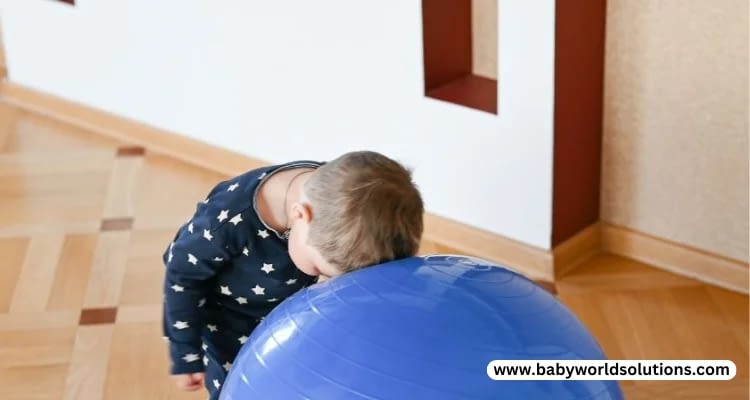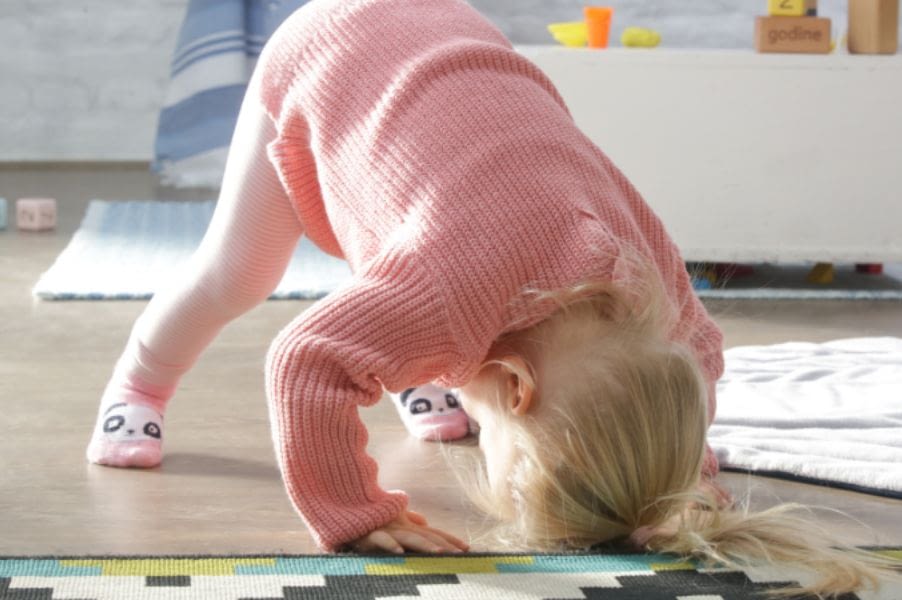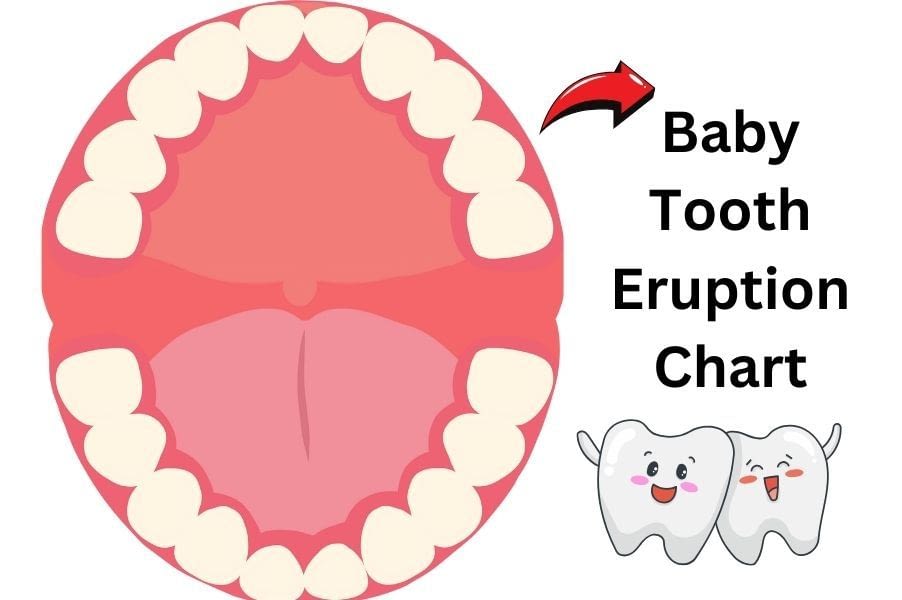When the rhythmic yet disconcerting head banging behavior manifests in children, particularly in the quiet of the night against the side of a crib, it can set off alarms for parents concerned about the development and well-being of their child. Many might wonder if such actions could be an early marker for Autism Spectrum Disorder (ASD) or if it’s a phase in normal child development.
Through this extensive exploration of the phenomenon, Is head banging a sign of autism? I offer insights into head banging and its potential links to autism, coupled with expert knowledge and guidance for concerned caregivers.
Understanding Autism Spectrum Disorder (ASD)
ASD is a developmental condition characterized by social interaction, communication, and behavior challenges. While ASD’s symptoms can vary widely, they typically present in early childhood and affect a person’s ability to function socially, at school, or in other areas of life.
Children with autism may engage in repetitive actions and have restricted interests. They might need help with changes to their routine or be particularly sensitive to sensory information.
It’s through understanding this condition’s multifaceted nature that we can begin to untangle whether head banging is an autism-related behavior or a symptom with a different cause.
Head Banging Behavior in Autism
Head banging can be worrisome, but its prevalence among toddlers is higher than expected. In neurotypical development, up to 20% of babies and toddlers experience a head banging phase. However, within the group of children who have ASD, this percentage can be significantly higher.
The characteristics of head banging in autistic individuals can include rhythmic movements, often with a distinct pattern, against a hard surface like a wall or the bars of a bed—the reasons behind this action range from self-stimulation and craving a particular sensory input to frustration and self-injury.

Why Do Babies Headbutt?
Babies sometimes engage in behaviors such as headbutting in their quest to explore the environment and understand their bodies. This activity is not uncommon and can be a form of self-soothing, especially during times of teething or illness.
Babies might also headbutt to manage overwhelming sensory input, creating a repetitive motion that provides a predictable and calming sensory experience. However, if the headbutting behavior becomes persistent and intense or is accompanied by other developmental concerns, it is important to seek professional advice.
Why Do Toddlers Headbutt? As with babies, toddlers might also headbutt for self-soothing. Toddlers, however, are also developing their social and emotional skills.
For some, headbutting can express frustration, exert control, or seek attention, especially if they struggle to communicate their feelings verbally. It’s also important to note that toddlers are more mobile and physically active, so headbutting can sometimes occur due to playful exploration.
Is head banging a sign of autism? What doctors say
Medical professionals, including pediatricians and neurologists, often approach the issue of head banging in autism with a multi-dimensional perspective. While it is true that an elevated frequency of head banging can be observed in children with autism, doctors caution against viewing this behavior as a standalone diagnostic indicator of ASD. It is underscored that head banging is also prevalent in children with other conditions or even those undergoing typical development.
The primary concern for doctors is the potential for self-injury in cases where the head banging becomes severe. In such instances, protective measures may be necessary, and behavioral therapy may be suggested to help manage and replace the behavior.
However, if the head banging is accompanied by other signs of developmental delay or unusual social, communicative, or sensory behaviors, physicians may consider a comprehensive evaluation for ASD.
Every child is unique and may display various symptoms that could indicate a problem. If a child exhibits head banging behavior, seeking guidance from a healthcare professional who can provide comprehensive knowledge about the child’s overall behavior and development is crucial.
Thus, while head banging can be a sign of autism, it is just one piece of a larger puzzle that healthcare professionals consider when diagnosing autism spectrum disorder.
Impact on Development and Functioning
The physical risks are apparent – head banging can lead to bruises, cuts, or even more severe injuries. Beyond the immediate danger, this behavior may indicate high stress or discomfort levels, potentially impacting the child’s overall mental health and development.
Socially, head banging and similar behaviors can further alienate children from their peers, becoming barriers to building relationships and engaging in communal activities. In language and communication, if head banging is a response to the inability to express feelings, it can hinder progress in acquiring vital communication skills.
Early Intervention and Support
Experts unanimously highlight the critical nature of Early Autism Intervention. Research consistently demonstrates that the earlier support systems are put into place, the better the outcomes for individuals with ASD. For head banging tied to autism, this can include various therapeutic strategies.
In the words of one developmental pediatrician, “Managing Head Banging Behavior is as much about understanding the child’s individual needs as it is about addressing the action itself.” This underscores the importance of tailored intervention—which could involve occupational therapy for sensory integration, behavioral interventions to teach alternative coping methods, or, when necessary, medical treatment.
What causes head banging in autism?
The first step in finding a solution for head banging in children with autism is to understand the cause behind it. Observing the child’s behavior and identifying any patterns or triggers, such as specific situations, times, or events that precede the behavior, is crucial.
Sensory Regulation
One major cause of head banging in children with autism is sensory regulation. Children with Autism Spectrum Disorder (ASD) often struggle with sensory integration, and head banging can provide a form of repetitive, rhythmic sensory input that helps them self-soothe or cope with overwhelming sensory experiences.
Communication Difficulties
Another reason for this behavior could be communication difficulties. Many children with ASD have trouble expressing their needs or feelings verbally, and head-banging might represent a non-verbal way of expressing frustration, discomfort, or a desire for attention.
Habitual or Ritualistic Behavior
Children with ASD often display habitual or ritualistic behaviors. Some may develop a habit of head banging as part of their routine. The predictability of this repetitive action can provide comfort and structure.
Dealing with Stress or Anxiety
Lastly, head banging might be a means of dealing with stress or anxiety. The repetitive motion can be soothing for some children, providing a coping mechanism in stressful situations. However, it’s important to note that while head banging can be a symptom of ASD, it should not be considered conclusive. A healthcare professional should address any concerns about a child’s behavior.
Autism head banging when angry.
Children with autism often struggle with expressing their emotions verbally, and head banging can sometimes be an outward expression of anger or frustration. This self-injurious behavior can provide a physical outlet for their emotional turmoil. Nevertheless, finding safer methods for these children to express their emotions and cope with distress is essential.
Autism pressure on the head
Some children with autism may apply pressure to their heads, a behavior that can be related to sensory processing issues. For these children, the pressure can provide relief from overwhelming sensory input, helping them self-soothe. It can also express discomfort or distress, often related to physical or emotional stimuli.
Other Possible Causes of Head Banging
While head banging is among the list of potential Autism Signs, it can also present in children without any developmental issues. Other conditions like sleep disorders, teething pain, ear infections, or simply as a self-soothing mechanism could explain why do babies headbutt or engage in toddler head butting.
Differentiating between ASD and other factors underscores the need for comprehensive evaluation. Children develop at various rates, and behaviors outside the typical range do not always indicate a deeper issue. However, any persistent concerns must get professional attention.

Autism Head Banging Solutions
Addressing head banging involves understanding the root cause, establishing safer coping mechanisms, and providing a supportive environment. Behavioral interventions, such as Applied Behavior Analysis (ABA), can help understand the triggers and develop replacement behaviors.
Therapeutic Interventions
Therapeutic interventions such as Applied Behavior Analysis (ABA) or Occupational Therapy (OT) can be beneficial. These therapies can provide techniques and strategies to manage self-injurious behaviors and promote positive behavior change.
Head banging replacement behavior
Identifying and teaching replacement behaviors is a critical component in managing head banging with an Authoritative parenting style. These behaviors serve the same function as head banging but are safer and more socially appropriate.
For instance, if a child headbangs to cope with sensory overload, providing a sensory toy or encouraging a safer sensory activity, like jumping on a trampoline, could be beneficial.
If head banging is a communication tool, teaching the child other ways to express their needs, like using visual aids or learning sign language, could be effective. Implementing these strategies should be done under the guidance of a trained professional to ensure the approaches match the child’s individual needs.
Developing Coping Strategies to Manage Toddler Head Banging Autism
Once the triggers are identified, it’s important to help the child develop safer coping strategies. This can involve teaching a child alternative behaviors, such as using a stress ball or fidget toy when feeling overwhelmed.
Managing head banging in babies with autism requires a compassionate, patient, and structured approach. Here are some strategies to consider:
- Observation: Keep a close eye on the baby’s actions to identify triggers for the head banging behavior. It could be a response to specific stimuli, situations, or times of day.
- Soothing Techniques: Use calming activities like gentle rocking, lullabies, or soft toys to help soothe the baby. A consistent bedtime routine can also help induce sleep and reduce stress levels.
- Distracting and Redirecting: If you notice the onset of head banging, try to distract the baby with a favorite toy or engaging activity. Redirecting their attention can help halt the behavior.
- Safe Environment: Ensure surroundings are secure to prevent injury. This may include padding the sides of the baby’s crib or other areas where they frequently engage in head banging.
- Professional Consultation: It’s crucial to consult with healthcare professionals – pediatricians, psychologists, or occupational therapists – for guidance. They can offer tailored strategies based on the child’s specific needs.
- Positive Reinforcement: Provide positive reinforcement when the baby engages in alternative behaviors instead of head banging. This can be through praise, cuddles, or their favorite activity.
Is Head Banging a Sign of ADHD?
Head banging is not typically associated with Attention Deficit Hyperactivity Disorder (ADHD), which is primarily characterized by problems with attention, impulse control, and overactivity. Nonetheless, some children with ADHD may display head banging behavior.
This behavior usually manifests as a response to heightened frustration or emotional distress, which children with ADHD can frequently experience due to their difficulties with impulse control and self-regulation. Difficulties with frustration tolerance and emotional regulation can sometimes lead to physical manifestations, such as head banging, to release emotional tension.
However, it’s important to distinguish head banging associated with emotional dysregulation from the repetitive, self-stimulatory head banging often seen with Autism Spectrum Disorder (ASD). In ASD, head banging tends to be a self-soothing behavior or a response to sensory overload, whereas in ADHD, it is more commonly a response to emotional distress.
Furthermore, children with ADHD may also have comorbid conditions such as Opposite Defiant Disorder (ODD) or Conduct Disorder (CD), which can also contribute to problematic behaviors like head banging. Understanding the root cause of such behaviors is crucial for implementing the appropriate intervention and support.
Nevertheless, it’s always important to consult with a healthcare professional or a psychologist if a child is displaying persistent head banging behavior. Though it is not a typical sign of ADHD, the behavior warrants further assessment to rule out other potential underlying issues, such as sensory processing disorder, ASD, or even physical health problems.
Conclusion: Why does my baby headbutt things?
Parents and caregivers need to observe and document the context and nuances of head banging behavior in wrapping up. While it could be a sign of autism, it is also a typical phase many children experience. Overreaction can be as harmful as neglect, so balanced vigilance is the key.
Creating a safe space is an immediate step for managing the risk of injury from head banging, alongside seeking professional advice from a healthcare provider or therapist for persistent or severe cases. Remember, the early days of parenting are filled with challenges, and a supportive, informed approach is your best ally.
By cultivating an environment where a child’s health and happiness are in focus and employing strategies that foster secure attachment and effective communication, caregivers can not only mitigate potential developmental risks but also enrich the lives of their young ones—shaping a calm, confident generational stride into the future.
1 Visit today





